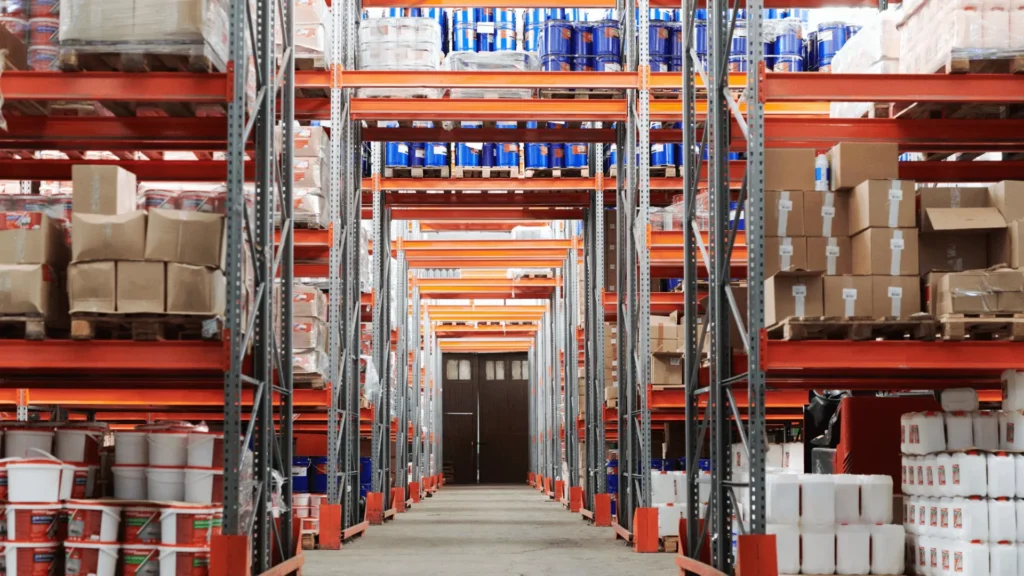Picture this: a bustling warehouse, palates coming in, orders printing out, shelves (and let’s face it, floor space) overflowing with boxes. You’re looking for a specific item but can’t find it in the chaos. The result? Customers receive their orders late–if they receive the right shipment at all.
We’ve all been there, but it shouldn’t be that way–and doesn’t have to be that way. There are ways to manage the team, the warehouse, the inventory data, and the workflow to get ahead of errors. How so? A warehouse barcode system can help you keep your warehouse in order, ensuring timely and accurate order fulfillment.
Read more: Minimize Errors with a Robust Warehouse Barcode SystemWhy Barcode Systems Matter
Inventory errors aren’t just hiccups in your business operations. As a company, they’re expensive burdens on your warehouse and customer service, and as an employee, they hinder you from doing your job effectively. Let’s break down why barcode systems are more than just a “nice-to-have” tool, as opposed to a necessity.
Mispicks. Imagine sending the wrong order across the country. That’s not just wasted shipping cost; it’s customer disappointment and potential returns, which can cost 5-10x the original product value in processing fees and lost sales. Studies show mispicks happen in 1-3% of orders without barcode verification, leading to thousands of dollars in losses for even small warehouses.
Lost inventory. Can’t find that pallet of in-demand water bottles? Lost inventory eats into your profits, with estimates suggesting up to 10-15% of stock goes missing in some warehouses due to manual tracking errors. That’s not just lost product; it’s lost sales opportunities and potential production stoppages. Implementing barcodes instantly provides real-time tracking, reducing losses and increasing inventory visibility.
Shipment delays. Late deliveries erode customer trust and cost you money. Traditional paper-based picking can lead to delays of 10-20 minutes per order, especially with large or complex orders. Barcodes streamline the picking process, reducing errors and increasing speed, with studies showing warehouses can achieve up to 50% faster order fulfillment with barcode scanning.
While initial costs exist, barcode systems deliver a clear return on investment (ROI) through increased accuracy, speed, and inventory control. Think of it as an investment in smoother operations, happier customers, and, ultimately, a more profitable bottom line.
Developing Your Barcode System
1. Hardware Selection
The first step to developing a barcode system is choosing the right hardware. This can make or break the effectiveness of your barcode system. You can choose from a few different types of hardware and providers based on your needs.
Stationary scanners are ideal for fixed points, like conveyor belts or packing stations. If you’re looking for guaranteed efficiency in scanning large quantities of items in a stable environment, this is your best bet.
Alternatively, you can opt for handheld scanners. These are best for providing flexibility and mobility for workers on the move. The handhelds are ideal for dynamic environments where the items you’re looking for are stored in different locations across your warehouse.
To choose the scanner that best fits your needs, it’s important to understand your warehouse layout, picking methods, and operational requirements.
2. Software Integrations
The foundation of any barcode system lies in its integration with an inventory management system (IMS). A fully integrating barcoding solution should enable you to:
- Capture data in real-time during scanning processes
- Instantly update your centralized inventory database
- Accurately locate products within your warehouse
- Obtain a comprehensive analysis of scanned data for decision-making
- Gain visibility into stock levels, order statuses, and warehouse performance
- Improve accountability with tracked employee actions
- Create and print custom barcode labels
Generally, the best warehouse barcode systems out there serve as an all-in-one solution, eliminating the need for multiple software. The right system should help you increase productivity from order intake all the way to shipping and customer reception.
3. Barcode Design
Once you’ve got down the basics of your barcode system, you should move on to creating well-designed and durable labels. After all, the labels won’t be of much use to you if they fall off of boxes or become unreadable.
Be sure to use clear, straightforward symbols with legible font size and style to avoid misreads. Select durable label materials resistant to wear, tear, and environmental factors – this is not the time to skimp on quality.
4. Placement of Barcode Labels
While it can be tempting to just slap labels anywhere on a box, the placement of barcode labels is not something to be overlooked. Affix labels in areas easily accessible for scanning and ensure they’re visible and unobstructed during handling. If a box says “this size up,” it’s best not to put the barcode label on the underside of the item.
Additionally, it’s also helpful to place labels at eye level for easy scanning by warehouse staff and clearly mark shelves to expedite the picking process. You’ll want to position labels on pick locations for quick and accurate identification. Finally, consider your colleagues: If it takes you more than a minute to find the label, it’ll take that long for others in your warehouse as well.
Warehouse Barcode System Best Practices
Even after you’ve set up and implemented your barcode system, efficiency relies on consistent practices throughout multiple stages.
- Receiving: Immediately scan products upon arrival for real-time inventory updates. This streamlines the entire supply chain, providing instant visibility into stock levels and minimizing delays.
- Put-away: Barcode scanning ensures precise product placement, enhancing location traceability. This step is fundamental for maintaining an organized warehouse and speeding up retrieval during order fulfillment.
- Picking: Implement batch-picking strategies with barcode verification for each item. This accelerates the picking process and reduces errors, ensuring the right products reach their destinations.
- Packing and shipping: Use a “verify to ship” process, where each item is scanned before packing, eliminating picking errors. This final verification step is crucial for accurate order fulfillment and customer satisfaction.
- Inventory management: Don’t forget about your inventory management system (IMS) for real-time stock visibility, and conduct cycle counts for ongoing accuracy. This minimizes discrepancies and provides a solid foundation for inventory control.
Remember, consistency is key to the success of your warehouse barcode system. Regular training sessions ensure your team is working efficiently in your warehouse and, to make things better, barcoding makes training easier. Because it defines a standard and coordinated process, training and maintaining team workflows is possible with a barcoding system. After all, we know the value of well-trained personnel and know they can make or break a business’ optimal performance and accuracy.
Ready to kickstart your barcoding system? Finale Inventory offers a turn-key barcoding and labeling solution with on-the-spot quality checks, minimizing errors and maximizing efficiency in your warehouse – all at a fraction of the cost of a custom system.
Schedule a demo to learn more about barcoding, or join our newsletter!






